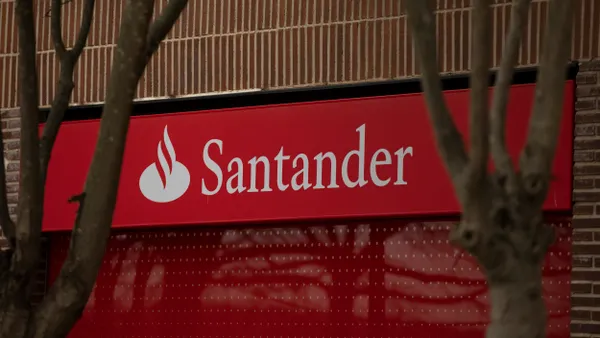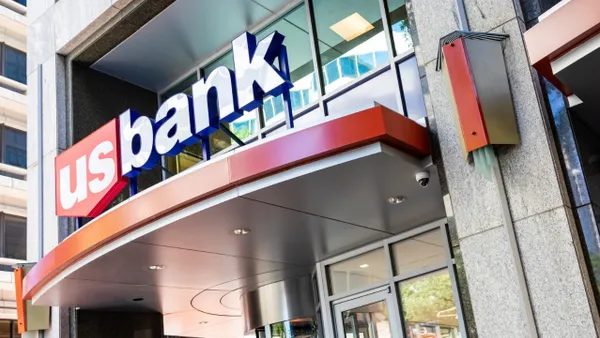Dive Brief:
-
Although the number of American households with bank accounts grew in 2019, the coronavirus pandemic is likely to contribute to an increase in unbanked people, according to a survey released Monday by the Federal Deposit Insurance Corp. (FDIC).
-
Nearly 95% of U.S. households, approximately 124 million, were banked last year, the highest number and percentage of households since the survey was first conducted in 2009, the agency said in its biennial report.
- "[F]indings from multiple years of the survey suggest that the unbanked rate is likely to rise as the unemployment rate rose from its level prior to the pandemic," FDIC Chairman Jelena McWilliams said Friday in a speech ahead of the report's release. "Households without a paycheck tend to be banked at lower rates than those with a paycheck. The economic ramifications of the pandemic will likely have an outsize impact on households without an adequate savings cushion or without access to responsible, affordable credit."
Dive Insight:
The FDIC's survey found 5.4% of U.S. households, approximately 7.1 million, were unbanked, a decline from 6.5% in 2017.
The report, conducted in June 2019 and comprising responses from almost 33,000 households, found improvements in the number of banked Black and Hispanic households.
About 13.8% of Black households were unbanked last year, down from 16.8% in 2017 and 18.5% in 2015, the report found.
Roughly 12.2% of Hispanic households were unbanked in 2019, the report found — a decrease from 14.4% in 2017 and 16.3% in 2015.
"Despite the improvements in unbanked rates for Black and Hispanic households, unbanked rates in 2019 for these households remained substantially above the unbanked rate for White households (2.5 percent)," the report said.
The survey, which the FDIC conducted with the U.S. Census Bureau, asked unbanked respondents to share the reason they didn't have bank accounts.
About half (49%) cited the inability to meet minimum balance requirements, according to the survey.
Mistrust in the banking system, at 16.1 %, was the second-most common reason cited by unbanked respondents.
The report also looked at the use of digital banking and found mobile banking was the primary method of account access in the past 12 months for 34% of respondents, a sharp increase from 15.6% in 2017.
In Friday's speech, McWilliams acknowledged the survey was conducted before the pandemic hit.
"We know the events of 2020 will affect how America banks and uses transaction services, but we do not know what the 'new normal' will look like or what structural changes may occur as a result of the pandemic," she said. "Households likely will engage banking and financial services in new and different ways."
Prior data suggests economic disruptions such as the pandemic will likely contribute to an increase in unbanked households, the FDIC said in a postscript.
"During the Great Recession and its immediate aftermath, the unbanked rate rose from 7.6 percent in 2009 to 8.2 percent in 2011," the report said. "Approximately one-third of this increase was associated with changes in the socioeconomic circumstances of U.S. households between 2009 and 2011."
The FDIC will conduct its next survey in June 2021, with a report expected in 2022, the regulator said.













